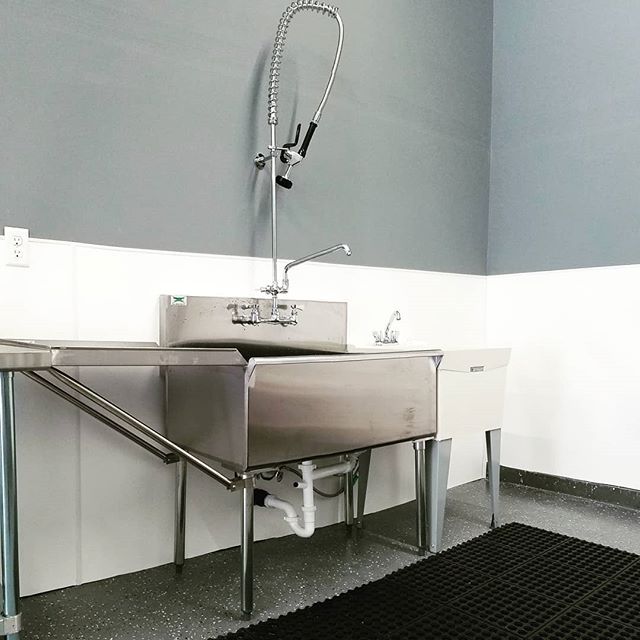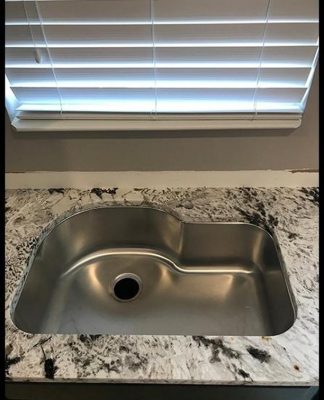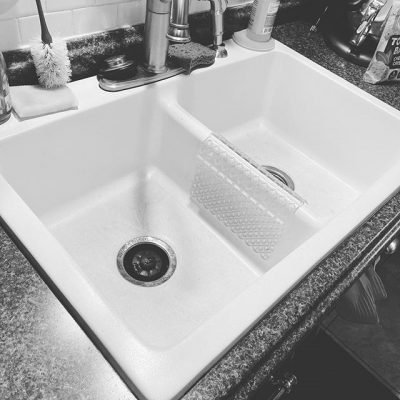Stainless steel sinks get by due to the durable material they’re constructed with and how good they look. But even this kind of material is not immune to gunk, muck or bacteria buildup no matter how badly we want it to be otherwise.
You see, stainless steel is a metal alloy that is made with a combination of metals such as chromium and nickel. Chromium forms a protective layer of chromium oxide over the surface when it’s exposed to air. When the surface is wet or covered with food and any other contaminants, the metals in your sink won’t be able to form that protective layer and become vulnerable to discoloration and stains.
That’s why you must regularly maintain your sink so that it can last longer and add beauty and charm to your kitchen‘s decor. Fortunately, this post is exactly where you can get that kind of help. Just follow the instructions below and you’ll be on your way:
Use Bleach
To disinfect your sink, we suggest using bleach as it is a highly effective solution that gets rid of bacteria, viruses, and mold. But the solution can also be dangerous if not used properly. So to ensure that doesn’t happen, follow these tips:
- Use soap and water to clean the surface before using bleach for disinfection: many confuse bleach for a cleaner when it’s actually a disinfectant. That’s why it’s important to use it on a clean surface.
- Ease up on the bleach: use as little bleach as possible. But this we mean just a capful (or tablespoon) per gallon of water or a ratio of approximately 1:50.
- Use cold and not hot water: you should use cold water for diluting bleach instead of hot water as the latter decomposes the active ingredients in the solution
- Don’t mix with other colors: if you think mixing bleach with other cleaners like ammonia, vinegar or rubbing alcohol will give you a more effective disinfectant, guess again. The chemical reaction from all these man-made solutions will create toxic fumes.
And now that we’ve gotten that out of the way, it’s time to teach you how to clean and disinfect your stainless steel sink:
Materials
- Sponge
- Dish soap
- Rubber gloves
- Bleach
- Clean, dry microfiber dish towel or cloth
- White vinegar
Instructions
- Begin with an empty sink: when cleaning a sink, it’s important that you do so when it’s empty. In other words, it shouldn’t consist of food, dishes or anything else.
- Use dish soap and warm water to clean your sink: warm water and dish soap is a pretty good precursor in getting most of the work done. You can use a microfiber cloth or sponge for cleaning, except for a metallic cleaning pad as it will scratch the surface of your stainless steel sink.
- Plug up your sink, fill it with water and then add bleach: use a stopper to prevent your sink from draining, fill it with water and then add a capful of bleach per gallon of water. Allow it to rest for 5 minutes.
- Wipe the faucet: in the meantime, dip the sponge that you have, dip it into the bleach solution and then wipe down the faucet.
- Now drain the sink and wipe it down: the time has come to drain your sink and use a damp sponge to give it a quick wipe down. After you’re done, let it dry.
Use vinegar to polish the sink: after your sink is completely dry, take a diluted vinegar solution (half water and half vinegar) as well as a clean microfiber cloth or dishtowel to give it a nice polish.
 USD
USD CAD
CAD



